Discover how a bimodal integration strategy can address the major data management challenges facing your organization today.
Get the Report →How to Access Live QuickBooks Online Data in Power Automate Desktop via ODBC
The CData ODBC Driver for QuickBooks Online enables you to integrate QuickBooks Online data into workflows built using Microsoft Power Automate Desktop.
The CData ODBC Driver for QuickBooks Online enables you to access live QuickBooks Online data in workflow automation tools like Power Automate. This article shows how to integrate QuickBooks Online data into a simple workflow, moving QuickBooks Online data into a CSV file.
Through optimized data processing, CData ODBC Drivers offer unmatched performance for interacting with live QuickBooks Online data in Microsoft Power Automate. When you issue complex SQL queries from Power Automate to QuickBooks Online, the driver pushes supported SQL operations, like filters and aggregations, directly to QuickBooks Online and utilizes the embedded SQL engine to process unsupported operations client-side (e.g. SQL functions and JOIN operations).
About QuickBooks Online Data Integration
CData provides the easiest way to access and integrate live data from QuickBooks Online. Customers use CData connectivity to:
- Realize high-performance data reads thanks to push-down query optimization for complex operations like filters and aggregations.
- Read, write, update, and delete QuickBooks Online data.
- Run reports, download attachments, and send or void invoices directly from code using SQL stored procedures.
- Connect securely using OAuth and modern cryptography, including TLS 1.2, SHA-256, and ECC.
Many users access live QuickBooks Online data from preferred analytics tools like Power BI and Excel, directly from databases with federated access, and use CData solutions to easily integrate QuickBooks Online data with automated workflows for business-to-business communications.
For more information on how customers are solving problems with CData's QuickBooks Online solutions, refer to our blog: https://www.cdata.com/blog/360-view-of-your-customers.
Getting Started
Connect to QuickBooks Online as an ODBC Data Source
If you have not already, first specify connection properties in an ODBC DSN (data source name). This is the last step of the driver installation. You can use the Microsoft ODBC Data Source Administrator to create and configure ODBC DSNs.
QuickBooks Online uses the OAuth authentication standard. OAuth requires the authenticating user to log in through the browser. To authenticate using OAuth, you can use the embedded OAuthClientId, OAuthClientSecret, and CallbackURL or you can obtain your own by registering an app with Intuit. Additionally, if you want to connect to sandbox data, set UseSandbox to true.
See the Getting Started chapter of the help documentation for a guide to using OAuth.
When you configure the DSN, you may also want to set the Max Rows connection property. This will limit the number of rows returned, which is especially helpful for improving performance when designing workflows.
Integrate QuickBooks Online Data into Power Automate Workflows
After configuring the DSN for QuickBooks Online, you are ready to integrate QuickBooks Online data into your Power Automate workflows. Open Microsoft Power Automate, add a new flow, and name the flow.
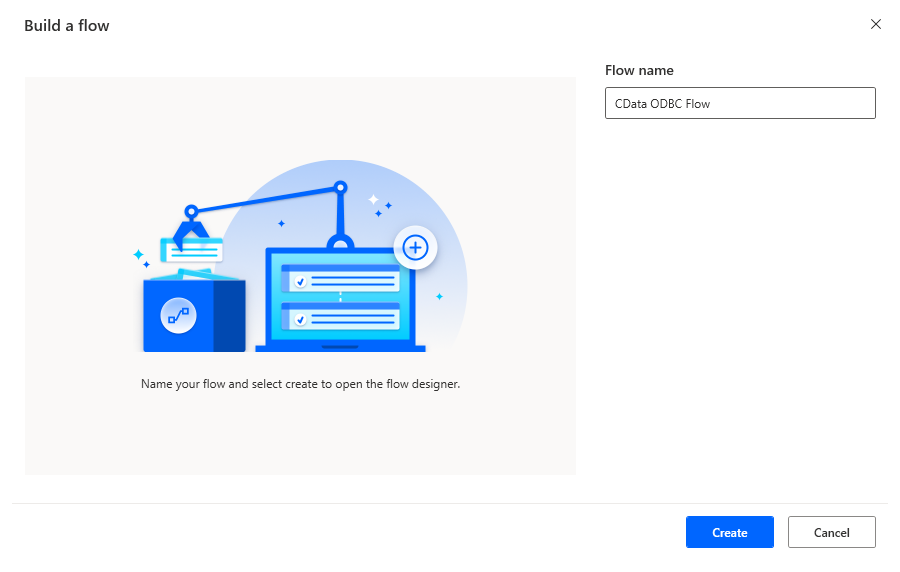
In the flow editor, you can add the actions to connect to QuickBooks Online, query QuickBooks Online using SQL, and write the query results to a CSV document.
Add an Open SQL Connection Action
Add an "Open SQL connection" action (Actions -> Database) and configure the properties.
- Connection string: DSN=CData QuickBooks Online Source
After configuring the action, click Save.
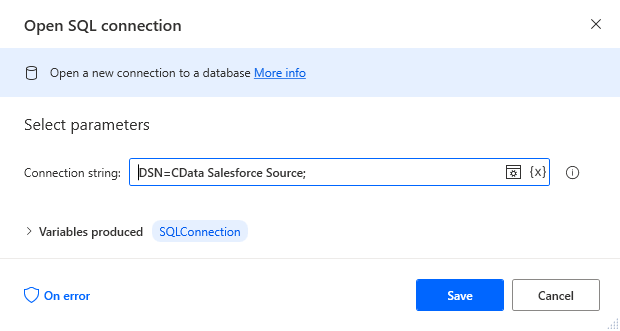
Add an Execute SQL Statement Action
Add an "Execute SQL statement" action (Actions -> Database) and configure the properties.
- Get connection by: SQL connection variable
- SQL connection: %SQLConnection% (the variable from the "Open SQL connection" action above)
- SQL statement: SELECT * FROM Customers
After configuring the action, click Save.
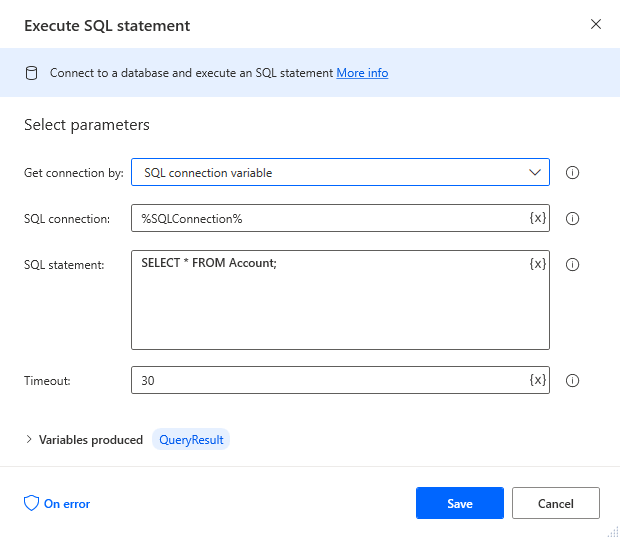
Add a Write to CSV File Action
Add a "Write to CSV file" action (Actions -> File) and configure the properties.
- Variable to write to: %QueryResult% (the variable from the "Execute SQL statement" action above)
- File path: set to a file on disk
- Configure Advanced settings as needed.
After configuring the action, click Save.
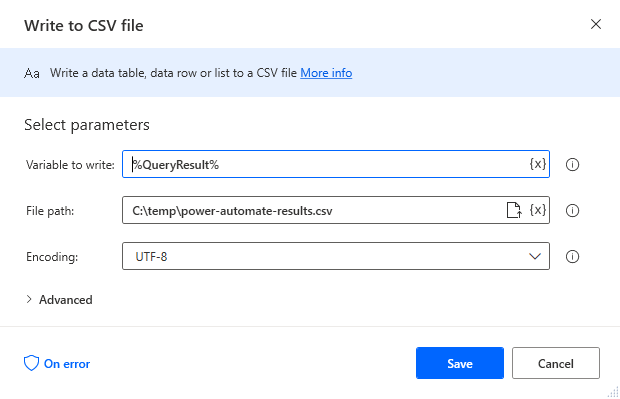
Add a Close SQL Connection Action
Add a "Close SQL connection" action (Actions -> Database) and configure the properties.
- SQL Connection: %SQLConnection% (the variable from the "Open SQL connection" action above)
After configuring the action, click Save.
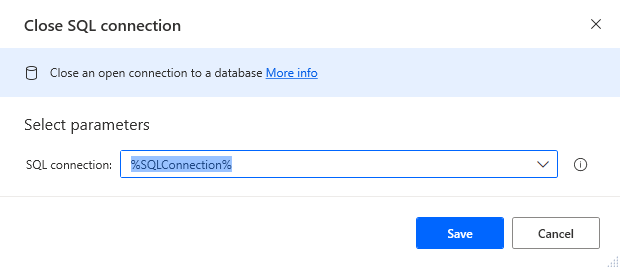
Save & Run the Flow
Once you have configured all the actions for the flow, click the disk icon to save the flow. Click the play icon to run the flow.
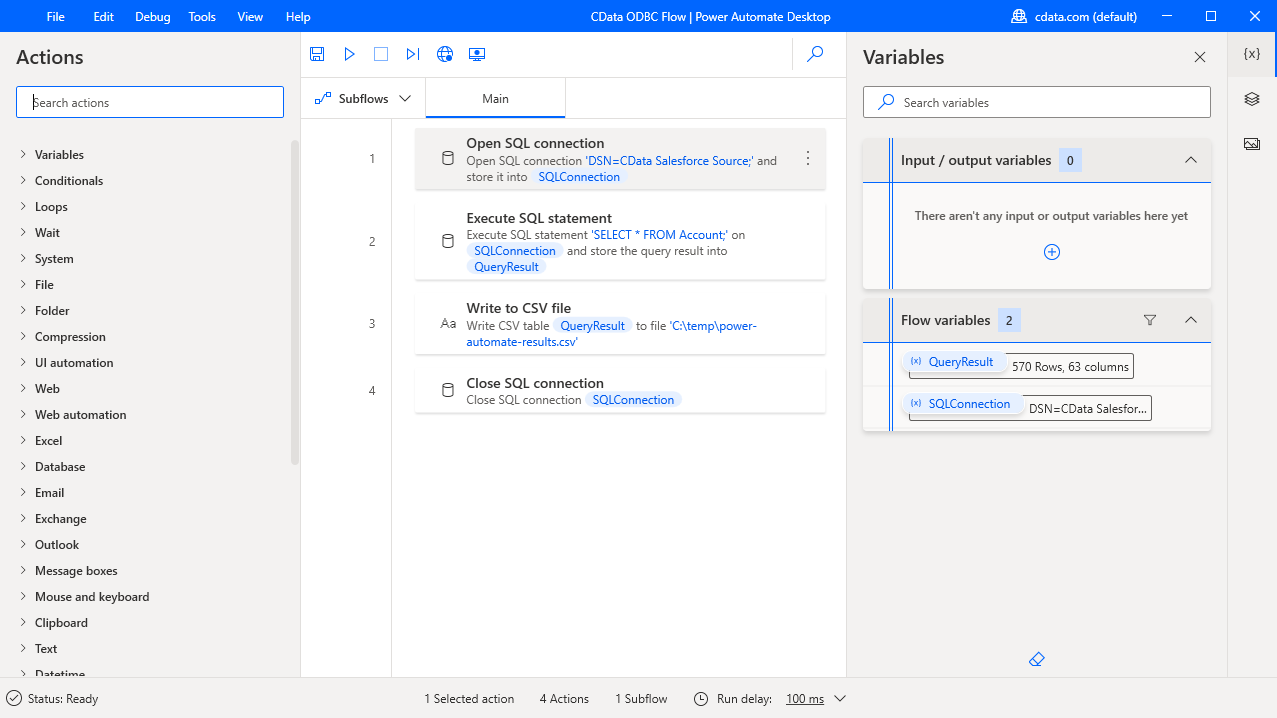
Now you have a workflow to move QuickBooks Online data into a CSV file.
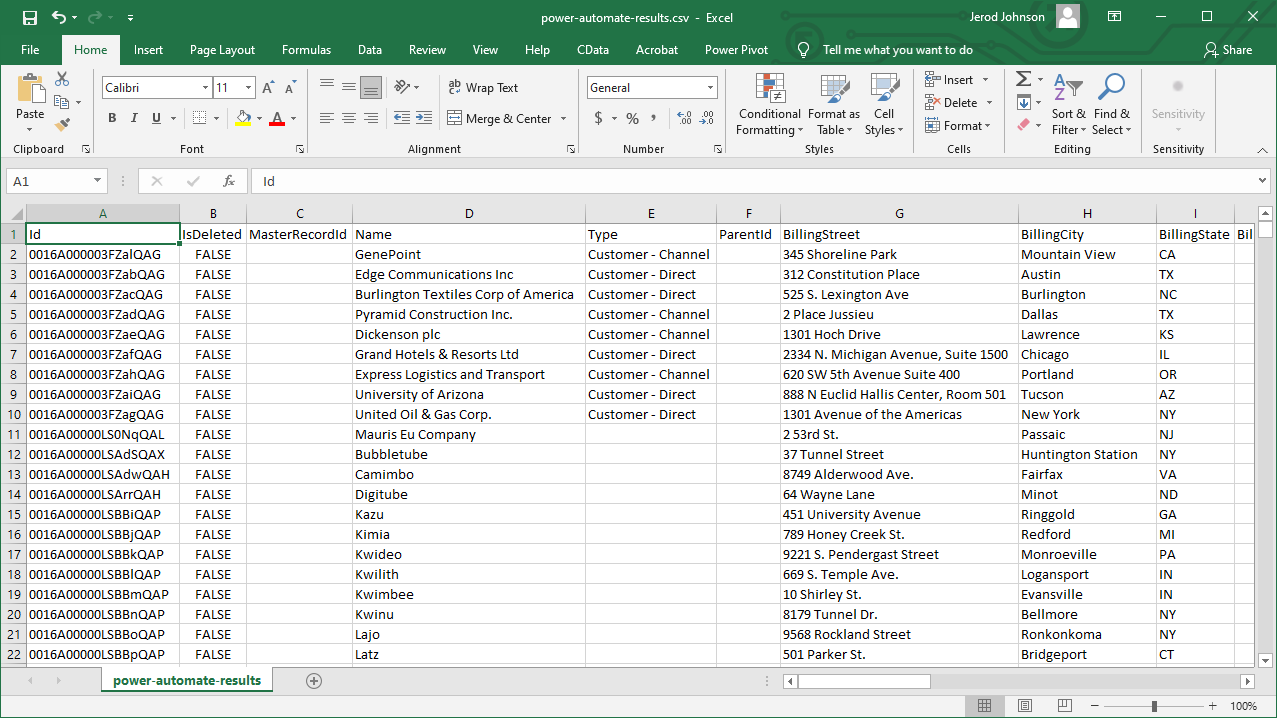
With the CData ODBC Driver for QuickBooks Online, you get live connectivity to QuickBooks Online data within your Microsoft Power Automate workflows.
Related Power Automate Articles
This article walks through using the CData ODBC Driver for QuickBooks Online with Power Automate Desktop. Check out our other articles for more ways to work with Power Automate (Desktop & Online):





